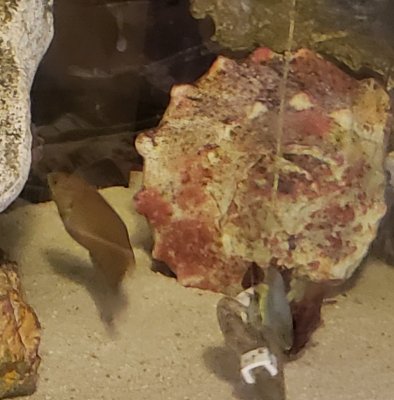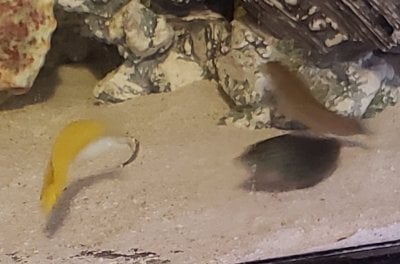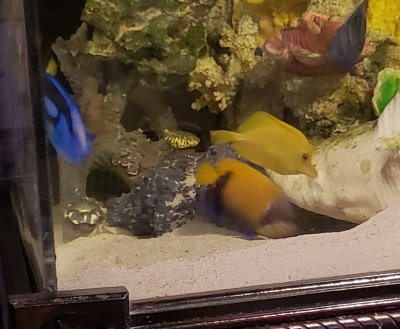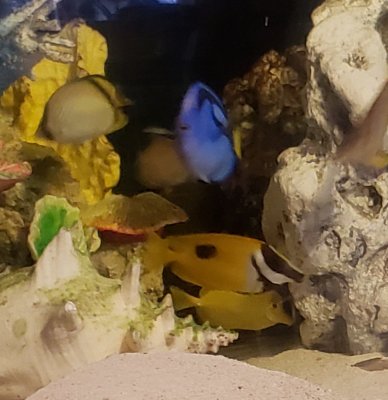Visual Diary of H202 Dosing in 180 Gallon Saltwater FOWLR Tank (page 21)
Update: Day 34
I dosed 3/4 cup or 177.441 ml, close to 1 ml per gal., both morning and evening. The moyer's wrasse was not up this morning when I left for work, but all other fish were present and eating except the yellow tang, which picked at but didn't really eat much of anything during the morning feeding. She did, however, eat well for dinner! She was even out swimming around a bit. She's so paper thin. I can't believe she's hung in there so long. The moyer's wrasse is still a no show for the evening feeding. Maybe it went to bed early? I did get home earlier tonight, so I expected to see it. With lights out in the tank right now because of the dosing, it may have its internal clock all messed up. I'll watch for it again tomorrow.
She's so paper thin. I can't believe she's hung in there so long. The moyer's wrasse is still a no show for the evening feeding. Maybe it went to bed early? I did get home earlier tonight, so I expected to see it. With lights out in the tank right now because of the dosing, it may have its internal clock all messed up. I'll watch for it again tomorrow.
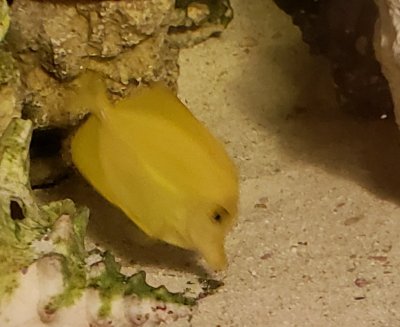
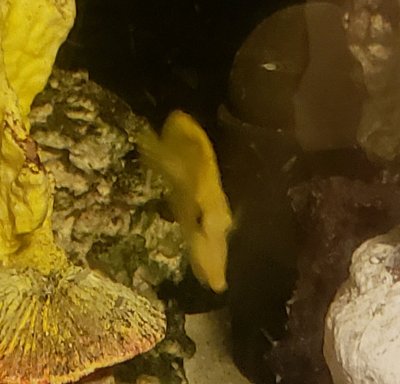
Update: Day 34
I dosed 3/4 cup or 177.441 ml, close to 1 ml per gal., both morning and evening. The moyer's wrasse was not up this morning when I left for work, but all other fish were present and eating except the yellow tang, which picked at but didn't really eat much of anything during the morning feeding. She did, however, eat well for dinner! She was even out swimming around a bit.


Last edited:





